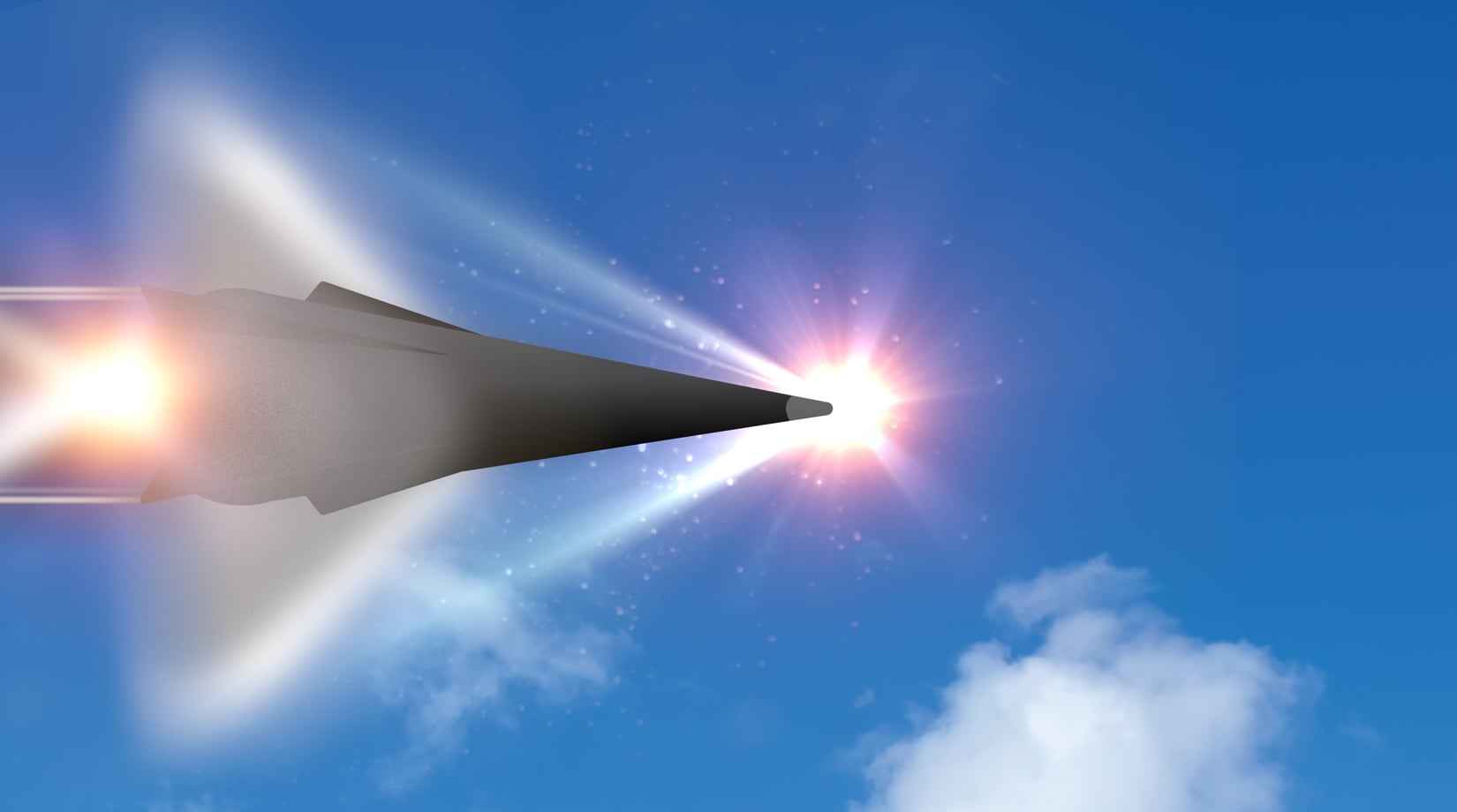WASHINGTON — The Pentagon made good on its word that it would test a hypersonic glide body in a flight test this year, launching it from the Pacific Missile Range Facility in Kauai, Hawaii, on March 19 at 10:30 p.m. local time.
The test was deemed a success.
The Common-Hypersonic Glide Body, or C-HGB, launched and flew at hypersonic speed to “a designated impact point,” according to a statement issued March 20 by the Department of Defense. The test was a joint effort between the Navy and Army.
Hypersonic weapons are capable of flying faster than the speed of sound — Mach 5 — and can maneuver between varying altitudes and azimuths, making it harder to detect.
The DoD has been jointly developing the C-HGB that will serve as the base of its offensive hypersonic missile. The test marks a major step forward in accomplishing that mission amid mounting criticism that the United States is behind China and Russia in hypersonic weapons development.
The C-HGB will be made up of the weapon’s warhead, guidance system, cabling and thermal protection shield. Each service will use the C-HGB as the base while developing individual weapon systems such as launchers capable of firing the weapons from land or sea.
The Missile Defense Agency monitored the test and gathered tracking data to help inform system development and design of a defensive hypersonic weapon — a ongoing effort within the agency — the statement noted.
Hypersonic weapons development is one of the DoD’s highest development priorities, and it is aiming to field a hypersonic weapon in the early to mid-2020s.
“This test builds on the success we had with Flight Experiment 1 in October 2017, in which our C-HGB achieved sustained hypersonic glide at our target distances,” said Vice Adm. Johnny Wolfe, the Navy’s director of Strategic Systems Programs. His outfit is leading the design of the C-HGB.
“In this test we put additional stresses on the system and it was able to handle them all, due to the phenomenal expertise of our top notch team of individuals from across government, industry and academia,” he said. “Today we validated our design and are now ready to move to the next phase towards fielding a hypersonic strike capability.”
While the Navy has led the C-HGB’s design and development, the Army is leading its production development. There is no hypersonic weapon industrial base in the U.S., so the service is leading the charge with the defense industry to start it from the ground up. Industry has, however, developed warheads, glide bodies and other components.
RELATED

One of the biggest challenges is the pace at which the services want to test and field a hypersonic offensive capability. The Army wants a mobile land-based capability fielded around 2023. That means the service will likely choose manufacturers to build hypersonic missiles in a year or two.
The Navy wants its ship-launched capability fielded in 2023 followed by a submarine-launched missile in 2024, and the Air Force wants to field its air-launched version in 2022.
Jen Judson is an award-winning journalist covering land warfare for Defense News. She has also worked for Politico and Inside Defense. She holds a Master of Science degree in journalism from Boston University and a Bachelor of Arts degree from Kenyon College.





